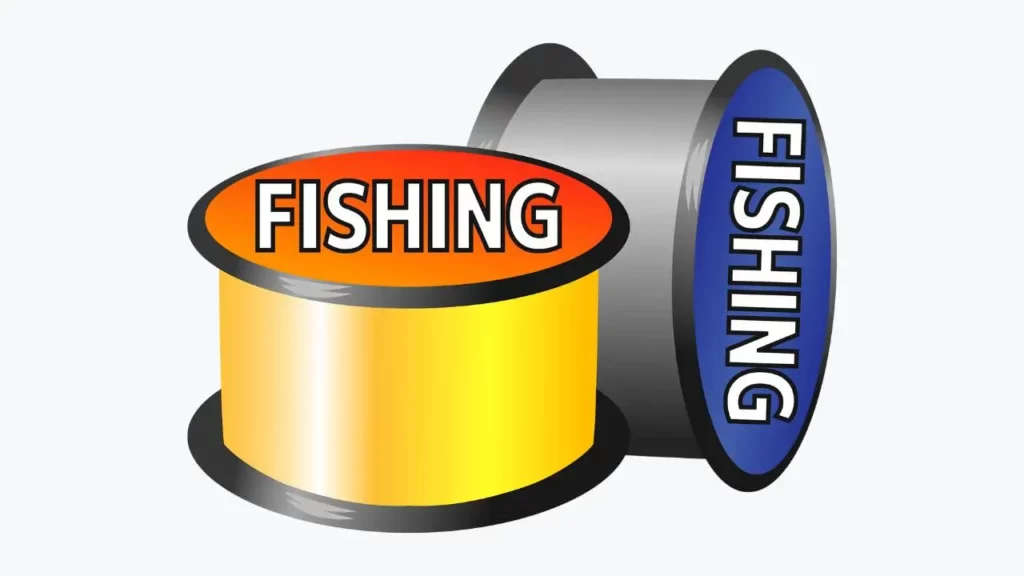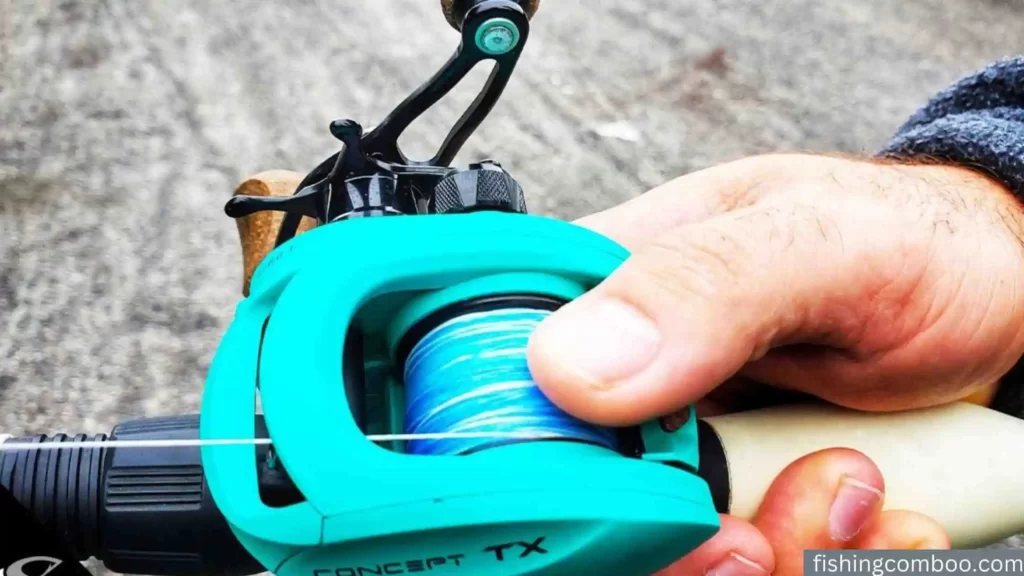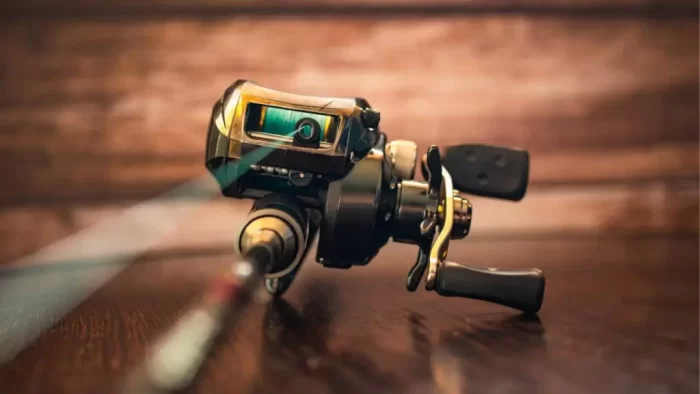Do you have a low-profile baitcaster that you’ve been dying to use but don’t know how? Low-profile baitcasters are becoming increasingly popular and give anglers more control over their casts, but learning how to cast one can be overwhelming.
Don’t worry! If you want to learn How to Cast a Low Profile Baitcaster, this post is for you. We’ll go over the steps to help you become a master in no time!
You don’t have to be an experienced fisherman to make great casts with a low-profile reel; it just takes practice and patience. With the tips discussed below, you’ll be able to make perfect casts and catch your limit. So, let’s get master it.
What is a Low Profile Baitcaster or Reel?
There are different types of baitcasting reels, such as round baitcast reels, low-profile baitcast reels, spinning reels, star drag reels, lever drag reels, conventional reels, fly reels, and much more. Low-profile casting reels are what we are concerned about.
A low-profile casting reel is a type of fishing reel that uses an internal spool and gear system to cast the lure. The spool and other reel components are positioned closer to the rod, allowing a more ergonomic and comfortable grip while casting.
It is called a “low profile” reel because it has a more compact and streamlined design than other baitcasting reels.
These reels are designed with a lower profile than spinning ones, meaning they sit lower on the rod and require less force when reeling in the line. This makes them ideal for anglers who need precise and accurate casts, such as bass fishermen.
Two further types of low-profile baitcasting reels are discussed below.
Learn More: Round Baitcast Reels vs Low Profile – Pros | Cons by Experts
Single Paddle Reels

In addition to being lightweight, single paddle reels are extremely easy to use. They feature a single handle used for casting and retrieving the line. This reel is ideal for beginner anglers as it provides an easy way to cast without worrying about line tangles or other complications.
The single-paddle design makes it easier to adjust the drag and cast with less effort. These reels also have a more compact design, making them ideal for anglers looking to fish in tight spaces.
Double Paddle Reels

Double paddle reels are designed for more experienced anglers who need extra control and precision when casting. This reel has two handles – one to cast and one to retrieve the line.
The double-paddle design provides an easier way to adjust the drag and more accurate casts, which is essential if you’re going for big fish.
Read Our Reviews: 10 Best Baitcaster Combos in 2023
How to Cast a Low Profile Baitcaster Step-by-Step Method Explained
Step 1: Choose the Right Lure and Line

Before you can cast with a low-profile reel, you’ll need to choose the right lure and line. You need to choose the right lure and line based on the type of fish you’re aiming for.
For example, if you are fishing for bass, you’ll want to use a soft plastic lure and a light braided line. On the other hand, a spinning lure and monofilament line would be best if you’re fishing for trout.
It’s essential to choose the right type of lure for the type of fish you are targeting, as this will help you get better results. You should also ensure that your line is in good condition and is not frayed or damaged.
Step 2: Reel in the Line
Once you have chosen the right lure and line, you’ll need to reel in the line. To do this, turn the handle of the low-profile reel in a clockwise direction. This will cause the spool to rotate, allowing you to reel in the line.
Make sure you turn the handle slowly and consistently so the line doesn’t become tangled or knotted. Also, ensure your bait should be 6 to 12 inches away from your rod’s tip.
The next step can be taken once you have reeled in all the lines.
Step 3: Set the Spool Tension Knob

Once you have reeled in the line, it’s time to set the drag tension knob. It’s located on the right side of the reel primarily and is used to control how much line tension you have.
By turning the knob clockwise, you can increase the drag or tension; you can decrease it counterclockwise. Finding a balance between tight and loose drag is crucial, as this will affect your casting accuracy.
Once you have set the knob, make sure the bait falls freely from the rod tip when you give it a slight shake.
Step 4: Set the Braking System
Most low-profile baitcasting reels come with a magnetic braking system that helps to reduce backlash and increase casting accuracy. This system is usually located on the left side plate of the reel and involves setting a number dial to adjust the speed at which the line is released from the spool.
As much as the max number you set, the less line released, and the increased magnetic force against the spool, it’s crucial to find a balance between too tight and too loose.
For beginners, setting the magnetic brake dial to 7-9 is usually best because it’ll release less line and help beginners to prevent backlash.
As you become an expert in baitcasting, you can decrease the braking system from 7-9 to 0-2, which will cause more lines to be released and increase accuracy.
Read: How to Use a Baitcaster For the First Time
Step 5: Position Your Hands to Cast
Now that your reel is set, it’s time to position your hands for casting. For a low-profile reel, it’s best to use an underhand grip. This means holding the handle with your palm facing down and your thumbs pointing up.
Use your thumb to control the line release on the spool with your other hand. When you’re ready, flick your wrist forward to cast. Make sure the bait is 6-12 inches away from the rod tip during casting for greater accuracy.
Step 6: Use Your Thumb

Once you cast, using your thumb to control the line’s speed as it is being reeled in is essential. This is done by lightly pressing against the spool with your thumb and releasing pressure when needed. This will ensure that the bait is presented steadily and help prevent backlash.
Step 7: Practice
Casting a low-profile reel can take some time to get used to, so it’s essential to practice and adjust as needed. Remember that the key is finding the right combination of drag tension, braking system setting, and grip technique to achieve greater accuracy.
As you become an expert in casting with low-profile reels, you’ll be able to make better casts more consistently. With enough practice, you’ll be able to achieve maximum casting distance with greater accuracy and have more success on the water.
Pro Tips to Cast a Low-Profile Reel
- Get the right rod: A good low-profile baitcasting reel requires a stiff, medium to heavy powered rod that will hold up under pressure and provide enough power and control.
- Check your line: Make sure the line is tight on the spool and that no kinks or twists are present, as this can cause tangles and other issues.
- Use the thumb bar and spool tension knob: The thumb bar is used to cast and release the line, while the spool tension knob should be adjusted to provide enough friction so that the line doesn’t get backlash (or ‘bird’s nest’).
- Start with a short distance: Begin casting by aiming at a short target and gradually increasing the distance.
- Be gentle when disconnecting: When disconnecting the line, be sure to do it gently and slowly so as not to tangle or break the line.
- Keep your wrist firm but flexible: Maintaining a firm yet loose wrist motion will help you to cast accurately.
- Follow up with practice: The more you practice, the better you’ll get at casting a low-profile baitcaster, so don’t give up! With patience and dedication, your skills will improve over time.
With these tips in mind, you should be able to cast a low-profile baitcast reel with ease successfully.
Benefits of Low-Profile Baitcasting Reels
Low-profile baitcasting reels offer several distinct advantages. They are particularly well-suited for finesse fishing techniques and shallow water applications. Here are a few of the benefits:
- More control over casting distance: Low-profile baitcasting reels create less line noise and friction, allowing for more precise casts with greater control of the distance you can cast.
- Increased comfort: It features an ergonomic design that comfortably fits your hand, reducing strain and fatigue.
- Better accuracy with lures: The smaller design of the baitcasting reel makes them easier to maneuver in tight spaces, while their low line noise makes it harder for fish to detect the lure when casting into the water.
- Easier storage and transportation: Low-profile reels are more compact and lighter than traditional baitcasters, making them easier to store and transport.
Drawbacks of Low-Profile Baitcaster Reels
- Low Profile Baitcasters are generally heavier than spinning reels, and some anglers may find this a disadvantage.
- The handle of this caster is short and stubby, which can make it uncomfortable to use for extended periods.
- Furthermore, they tend to be more expensive than spinning reels.
- The low-profile reel can be challenging to master, and many anglers are frustrated by the learning curve.
- Repairs and replacements are more expensive with these reels due to their low durability.
- Finally, they require maintenance and regular cleaning to maintain good working order. Some anglers find this time-consuming and costly.
Considering all this, it is vital to consider the pros and cons before investing in a low-profile bait caster. Despite their drawbacks, they can significantly improve an angler’s success when fishing with live bait or jigs. As long as the angler is patient and willing to take the time to learn how to use it properly, it can be a worthwhile investment.
Frequently Asked Questions
Why can’t i cast far with my baitcaster?
Poor technique is the most common reason you cannot cast far with a baitcaster. To maximize your casting distance, it’s essential to ensure that your rod and reel are set up correctly and have the right lure weight for the rod and line size.
You must also practice proper casting techniques, such as thumbing the spool, maintaining your rod tip level, and making a smooth casting motion. With practice and patience, you can quickly improve your casting distance.
Can you catfish with a low profile baitcaster?
Yes, you can use it to catfish! It is ideal for casting heavier lures, as it has more power than spinning reels. Additionally, its ergonomic features make it easier to handle and use than traditional baitcasting reels.
How do you spool a low profile baitcaster?
To spool a low-profile baitcaster, start by feeding the line onto the reel from your left hand to your right. Secure the end of the line with a knot, and then use your thumb to hold it in place. Finally, begin winding the line tightly around the spool, ensuring no line overlap or gaps for an even spool. Repeat until the spool is complete, then you are ready to cast!
Final Words
In conclusion, learning how to cast a low-profile baitcaster like a pro can take some time and practice, but with the proper techniques and tips, you can master this skill and take your fishing game to the next level. Remember to focus on your wrist action, use the right amount of thumb pressure, and pay attention to the spool tension. I hope this article has been helpful!


